
Lot 14
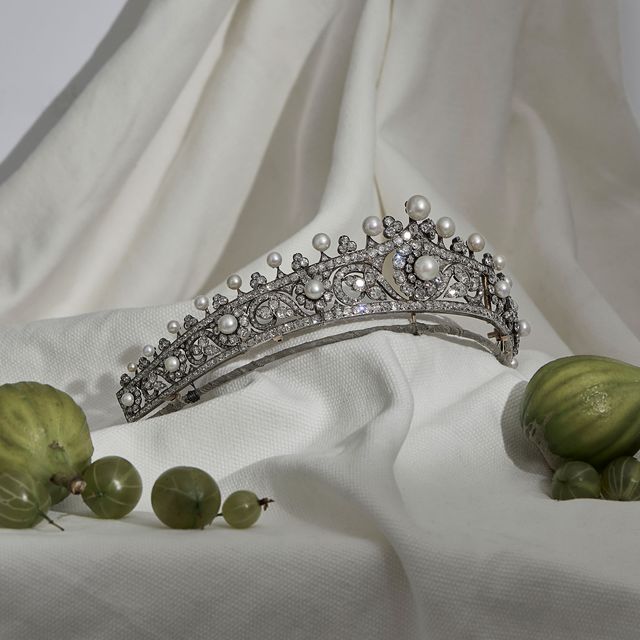
The Airlie Tiara: A late 19th century pearl and diamond tiara
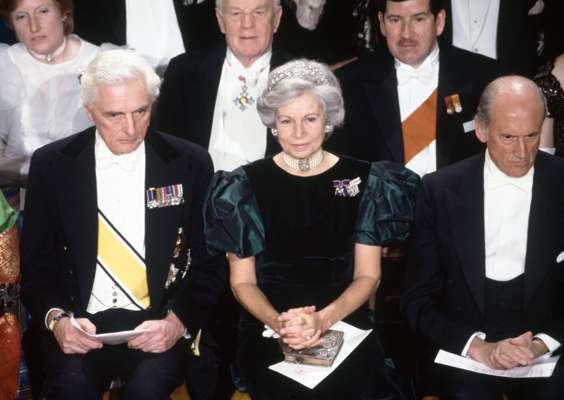
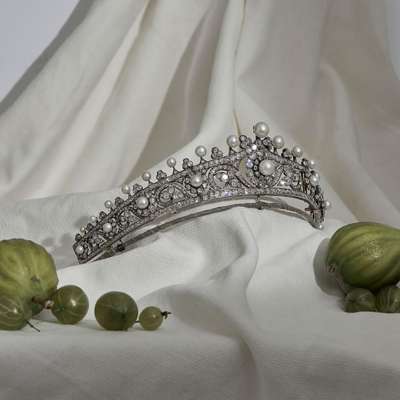
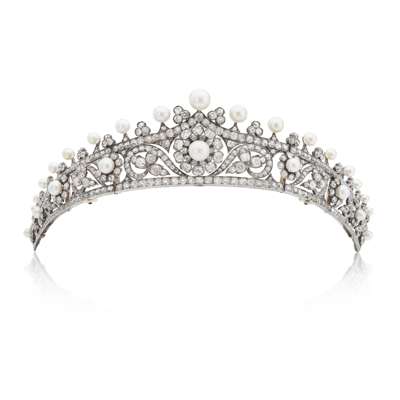
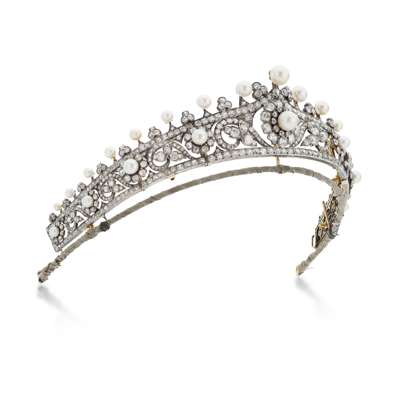
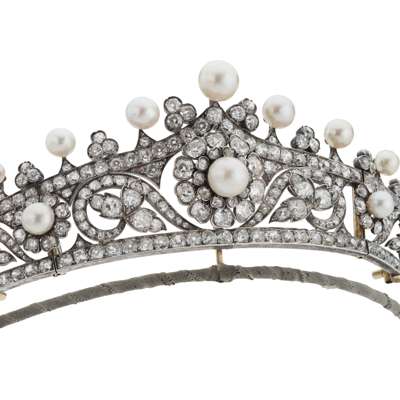
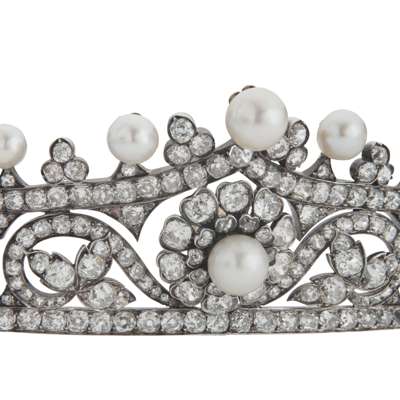
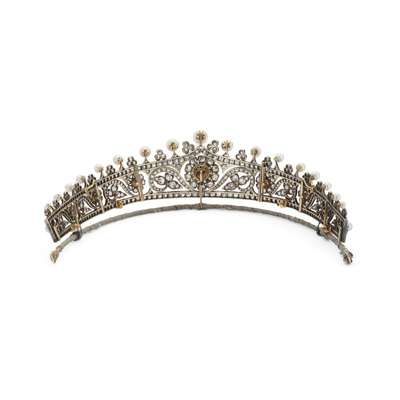
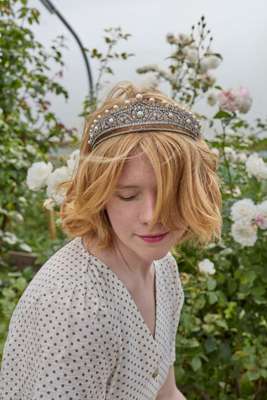
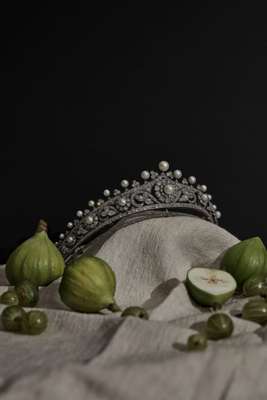
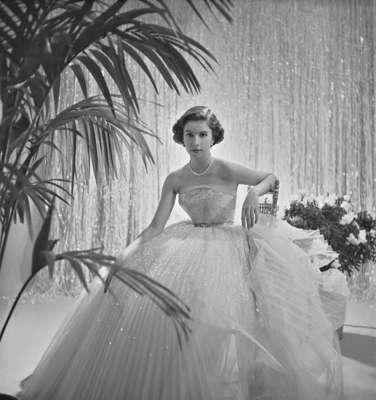
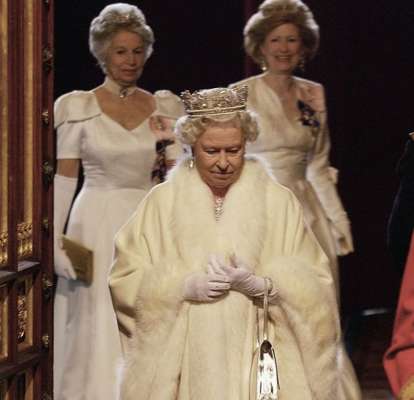


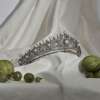
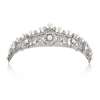
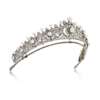
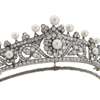
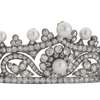
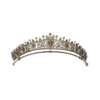





Auction: The Collection of Virginia Fortune Ryan Ogilvy, Dowager Countess of Airlie | Wednesday 22 October 2025 from 1pm
Description
Set throughout with cushion-shaped, old brilliant and rose-cut diamonds, the pierced tapered form decorated with daisies, each centrally featuring a 5.1-9.4mm pearl, with cushion-shaped diamond ivy leaves, adorned by alternating 4.0-8.0mm pearls and clovers across the crest, coming to a central apex with a 9.6mm natural pearl, cushion-shaped and old brilliant-cut diamonds approx. 34.75 carats total, inner diameter 15.4cm, cased by R&S Garrard & Co., 25 Haymarket, London
Accompanied by a report from The Gem & Pearl Laboratory stating that the two principal pearls are both natural, saltwater. Report number 25930, dated 13th May 2025. Remaining pearls untested.
"This beautiful tiara is so unique in that it has been a ‘working tiara’ for decades. It came directly from Buckingham Palace, not something that happens every day. Historic tiaras of this provenance are rare to appear on the market and coupled with its noble history and associations with the late Queen Elizabeth II, it makes this an incredibly rare and desirable acquisition." - Sarah Duncan, Head of Jewellery London
Provenance
From the Estate of Virginia Fortune Ryan Ogilvy, Dowager Countess of Airlie
Footnote
Post-Sale Note:
The Airlie Tiara, previously owned by the Queen’s American-born lady-in-waiting and witnessed key moments in royal history, achieved a remarkable £189,000 at auction in our London Jewellery sale on 22 October 2025, far exceeding its pre-sale estimate of £50,000–£70,000.
-----
By the 19th century, despite rises and falls in fashion, the tiara had firmly found it's place in European court life, in part thanks to the international trends created by the self-crowned Emperor Napoleon and his Empress Josephine. In Britain court life was much more secure and stable than that of their European counterparts and this allowed the tiara to become a regular fixture of royal fashions.
In the latter half of the 19th century, British court entertainments were generally overseen by the Prince of Wales, later Edward VII, and his Danish wife Princess Alexandra. The Prince of Wales insisted on tiaras being worn at court, without exception. The wearing of one to nearly any event of note became de rigueur for women in high society.
By 1901, the coronation of Edward VII created a flurry of interest and demand for tiaras. At this time there was a transition between the traditional 19th century silver and gold mounts and the finely worked platinum settings which came to dominate the first decades of the 20th century. Not long thereafter, in 1910, the demand for tiaras surged again with the next coronation, that of King George V.
The Airlie Tiara was made towards the end of the 19th century and was first worn by Mabell, Countess of Airlie. In 1901 she was made Lady of the Bedchamber to the then Princess of Wales, later to become Queen Mary. Queen Mary had a particularly notable jewellery collection, including several significant tiaras and diadems. Some of which were inherited, others she commissioned, including from Garrard, the Crown Jewellers.
The presence of daisies and ivy in this tiara, accompanied by pearls, could suggest a gift for a bride. In the ‘Language of Flowers’, a daisy represents innocence, loyal love and purity while ivy is believed to be “an aid to love”. In society, the first official time a woman would wear a tiara is on her wedding day, an English tradition with roots back to the end of the 15th century.
Latterly the Airlie Tiara was regularly seen worn by Mabell's granddaughter-in-law, Virginia Fortune Ryan Ogilvy, Countess of Airlie, in particular in her role as Lady of the Bedchamber to Queen Elizabeth II. Virginia Ogilvy had the unique distinction of being the first ever American-born Lady in Waiting to a British monarch. She held this role from 1973 until the death of Queen Elizabeth in 2022.
The Airlie Tiara was worn with a high degree of regularity. It could be seen at numerous State Openings of Parliament, official overseas visits, State Banquets and Gala Receptions at Windsor Castle and Buckingham Palace, amongst other high profile events.























